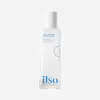What's inside
What's inside
 Key Ingredients
Key Ingredients

No key ingredients
 Benefits
Benefits

 Ingredients Side-by-side
Ingredients Side-by-side

Water
Skin ConditioningButylene Glycol
HumectantGlycerin
HumectantPropanediol
Solvent1,2-Hexanediol
Skin ConditioningPolyglyceryl-10 Laurate
Skin ConditioningPolyglyceryl-10 Myristate
Skin ConditioningAloe Barbadensis Leaf Water
MaskingHippophae Rhamnoides Water
MaskingBetula Alba Juice
AstringentTrehalose
HumectantAllantoin
Skin ConditioningEctoin
Skin ConditioningBetaine
HumectantCocos Nucifera Water
MaskingEthylhexylglycerin
Skin ConditioningXanthan Gum
EmulsifyingCarbomer
Emulsion StabilisingArginine
MaskingDisodium EDTA
Polyglutamic Acid
Skin ConditioningGlyceryl Acrylate/Acrylic Acid Copolymer
HumectantSodium Hyaluronate
HumectantCamellia Japonica Flower Extract
EmollientWater, Butylene Glycol, Glycerin, Propanediol, 1,2-Hexanediol, Polyglyceryl-10 Laurate, Polyglyceryl-10 Myristate, Aloe Barbadensis Leaf Water, Hippophae Rhamnoides Water, Betula Alba Juice, Trehalose, Allantoin, Ectoin, Betaine, Cocos Nucifera Water, Ethylhexylglycerin, Xanthan Gum, Carbomer, Arginine, Disodium EDTA, Polyglutamic Acid, Glyceryl Acrylate/Acrylic Acid Copolymer, Sodium Hyaluronate, Camellia Japonica Flower Extract
Water
Skin ConditioningOryza Sativa Extract
AbsorbentGlycerin
HumectantChamaecyparis Obtusa Leaf Extract
Skin ConditioningMelissa Officinalis Leaf Extract
Skin ConditioningRosa Rugosa Leaf Extract
HumectantBetaine
HumectantChrysanthemum Morifolium Flower Extract
Skin ConditioningSalix Alba Bark Extract
AstringentButylene Glycol
Humectant1,2-Hexanediol
Skin ConditioningCarbomer
Emulsion StabilisingArginine
MaskingPolyglyceryl-10 Laurate
Skin ConditioningPolyglyceryl-10 Myristate
Skin ConditioningAllantoin
Skin ConditioningEthylhexylglycerin
Skin ConditioningAdenosine
Skin ConditioningStyrene/Vp Copolymer
Disodium EDTA
Water, Oryza Sativa Extract, Glycerin, Chamaecyparis Obtusa Leaf Extract, Melissa Officinalis Leaf Extract, Rosa Rugosa Leaf Extract, Betaine, Chrysanthemum Morifolium Flower Extract, Salix Alba Bark Extract, Butylene Glycol, 1,2-Hexanediol, Carbomer, Arginine, Polyglyceryl-10 Laurate, Polyglyceryl-10 Myristate, Allantoin, Ethylhexylglycerin, Adenosine, Styrene/Vp Copolymer, Disodium EDTA
 Reviews
Reviews

Ingredients Explained
These ingredients are found in both products.
Ingredients higher up in an ingredient list are typically present in a larger amount.
1,2-Hexanediol is a synthetic liquid and another multi-functional powerhouse.
It is a:
- Humectant, drawing moisture into the skin
- Emollient, helping to soften skin
- Solvent, dispersing and stabilizing formulas
- Preservative booster, enhancing the antimicrobial activity of other preservatives
Allantoin is a soothing ingredient known for its protective and moisturizingg properties. Because of this, it is often added to products with strong active ingredients.
Studies show higher concentrations of this ingredient can promote wound healing.
Though it can be derived from the comfrey plant, allantoin is produced synthetically for cosmetic products to ensure purity.
Learn more about AllantoinArginine is an amino acid that is important for human development. Your body uses is it to produce hair keratin and skin collagen.
As a cosmetic ingredient, Arginine has antioxidant properties and can also help repair damaged skin. This ingredient is derived either synthetically or from animals.
Arginine isn't fungal acne safe when used in the presence of other lipids (fats, fatty acids, oils, esters, etc). Oils and fats occur naturally within the skin, so take caution when using Arginine if you're prone to fungal acne.
Learn more about ArginineBetaine is a common humectant (a substance that promotes retention of moisture). It's known to be gentle on the skin and can help balance hydration.
This ingredient is best for improving hydration and soothing irritated skin. Studies also show it helps even out skin tone.
Fun fact: Betaine is naturally created in the skin and body. The kind found within cosmetic products can be either plant-derived or synthetic.
Another name for betaine is trimethylglycine.
Learn more about BetaineButylene Glycol (or BG) is used within cosmetic products for a few different reasons:
Overall, Butylene Glycol is a safe and well-rounded ingredient that works well with other ingredients.
Though this ingredient works well with most skin types, some people with sensitive skin may experience a reaction such as allergic rashes, closed comedones, or itchiness.
Learn more about Butylene GlycolCarbomer is a polymer of acrylic acid. Its main role is to create a gel consistency.
A high amount of carbomer can cause pilling or balling up of products. Don't worry, most products contain 1% or less of carbomer.
Disodium EDTA plays a role in making products more stable by aiding other preservatives.
It is a chelating agent, meaning it neutralizes metal ions that may be found in a product.
Disodium EDTA is a salt of edetic acid and is found to be safe in cosmetic ingredients.
Learn more about Disodium EDTAEthylhexylglycerin (we can't pronounce this either) is commonly used as a preservative and skin softener. It is derived from glyceryl.
You might see Ethylhexylglycerin often paired with other preservatives such as phenoxyethanol. Ethylhexylglycerin has been found to increase the effectiveness of these other preservatives.
Glycerin is already naturally found in your skin. It helps moisturize and protect your skin.
A study from 2016 found glycerin to be more effective as a humectant than AHAs and hyaluronic acid.
As a humectant, it helps the skin stay hydrated by pulling moisture to your skin. The low molecular weight of glycerin allows it to pull moisture into the deeper layers of your skin.
Hydrated skin improves your skin barrier; Your skin barrier helps protect against irritants and bacteria.
Glycerin has also been found to have antimicrobial and antiviral properties. Due to these properties, glycerin is often used in wound and burn treatments.
In cosmetics, glycerin is usually derived from plants such as soybean or palm. However, it can also be sourced from animals, such as tallow or animal fat.
This ingredient is organic, colorless, odorless, and non-toxic.
Glycerin is the name for this ingredient in American English. British English uses Glycerol/Glycerine.
Learn more about GlycerinPolyglyceryl-10 Laurate is an ester of lauric acid and Polyglycerin-10.
Polyglyceryl-10 Laurate is a cleansing agent and emulsifier. It helps gather dirt, oil, and other pollutants to be rinsed away. As an emulsifier, it helps prevent ingredients from separating, such as oil and water.
Polyglyceryl-10 Laurate may not be fungal acne safe.
Learn more about Polyglyceryl-10 LauratePolyglyceryl-10 Myristate isn't fungal acne safe.
Water. It's the most common cosmetic ingredient of all. You'll usually see it at the top of ingredient lists, meaning that it makes up the largest part of the product.
So why is it so popular? Water most often acts as a solvent - this means that it helps dissolve other ingredients into the formulation.
You'll also recognize water as that liquid we all need to stay alive. If you see this, drink a glass of water. Stay hydrated!
Learn more about Water